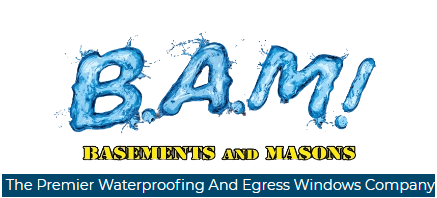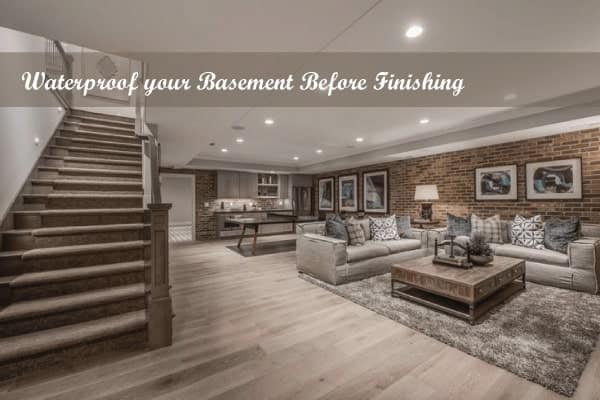A finished basement is the dream of many homeowners. Sometimes it’s a necessity, a way to create badly needed living space for a growing family. Other times it’s a luxury, a den, a family room, a playroom, a “man cave.”
No matter what the intended use for finished basement space is, the job of turning below-ground square footage into finished, livable, useful space is a big one. Whether done by a professional or as a DIY project, remodeling a basement takes a lot of time, a lot of work and a lot of money.
Given this major investment in the project, it is critical that the basement be in great condition before any work starts and that usually means that it is dry with no indications of seepage. Nothing will ruin a beautiful remodeling job like soaked carpets, moldy drywall, and damaged furniture so it is essential that a basement gets fully waterproofed before any finishing work begins.
Of course, the homeowner could take the risk and hope that seepage never occurs but, even though it is possible to fix basement water problems in a finished basement, the cost and aggravation factor will increase geometrically.
Waterproofing a Basement Before Finishing
There are several ways that a finished basement can get water in it and several methods of waterproofing one before finishing. Some are specific to a poured concrete or masonry foundation; others apply to either.
Crack Seepage: A non-structural wall crack is the most common source of seepage in a poured concrete foundation. These cracks can be repaired by injecting them with expanding polyurethane, which fills and seals the crack all the way to the outside soil. Cracks in masonry foundations occur in mortar joints and are best repaired by installing an exterior waterproofing membrane, a thick coating of asphalt-modified polyurethane that is troweled onto the outside wall. Seepage from mortar joint cracks can also be managed by installing interior drain tile.
Cove Seepage: Another common source of seepage in any type of foundation is Hydrostatic pressure coming through the joint between the foundation wall and basement floor, known as the “cove joint.” Water enters the basement through the cove joint when hydrostatic pressure under the foundation forces it through. Installing interior under-floor drain tile, a system of perforated pipe embedded in washed gravel under the basement floor, will alleviate this pressure, collect the water, and carry it to a sump pump for discharge from the basement.
When installed properly, interior drain tile will be maintenance-free, making it an ideal preventative repair for a basement to be finished.
Wall Seepage – Both poured concrete and masonry foundations experience wall seepage: concrete through porous spots or over top of the foundation wall; masonry through the mortar cracks and porous masonry like concrete block or brick. Installing an interior drain waterproofing system will redirect the water into a sump pump.
Call the Professionals before finishing your Basement
Any homeowner who is planning a finished basement remodeling project will require the advice and assistance of an experienced basement waterproofing contractor to ensure that his or her dream basement won’t be torn apart in the future to repair water problems.
Allow the experts at BAM Basements and Masons to help you. We are one of the most sought-after names when it comes to basement waterproofing in and around Des Moines. Our team has many years of experience and in-depth knowledge about keeping the basement free from moisture and humidity. Therefore, we can suggest the right method for your home. All our basement waterproofing techniques come at bargain basement pricing, and we ensure the timely completion of each of the projects. To know more about basement waterproofing and get a free estimate, please feel free to call us!

